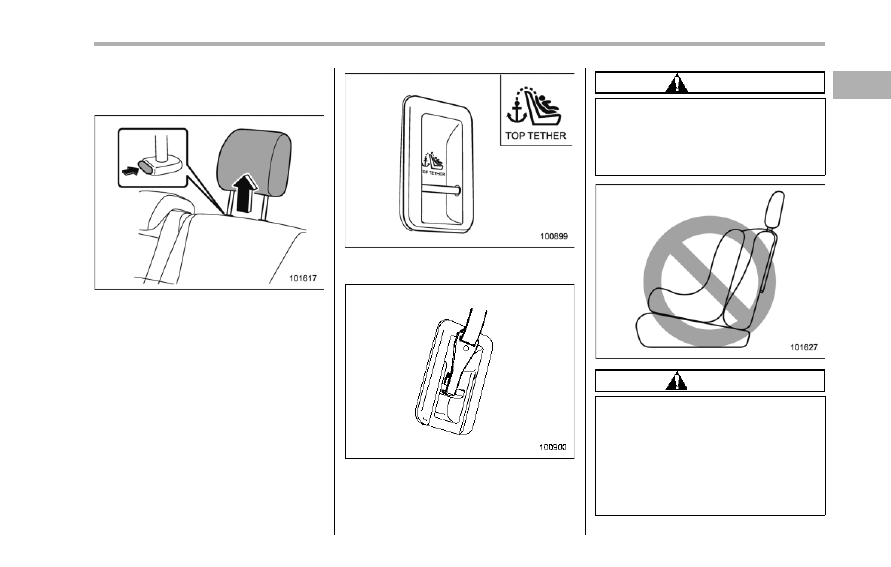Subaru Tribeca (2014 year). Manual - part 5

! To hook the top tether
! Second-row outboard seat
1. Remove the head restraint at the
window-side seating position where the
child restraint system has been installed
with the lower anchorages or seatbelt; lift
up the head restraint while pressing the
release button. Store the head restraint in
the cargo area. Avoid placing the head
restraint in the passenger compartment to
prevent it from being thrown around in the
passenger compartment in a sudden stop
or a sharp turn.
2. Confirm that there are no obstacles
around the anchorages.
3. Fasten the top tether hook of the child
restraint system to the appropriate upper
anchorage.
4. Tighten the top tether securely.
CAUTION
When the child restraint system is to
be secured using the top tether,
pass the top tether under the head
restraint between the head restraint
stay posts.
CAUTION
Be sure to install the top tether with
the head restraint raised to the
highest position. If the head re-
straint is in any of the lower posi-
tions, the top tether will touch the
head restraint and the resulting
slack will prevent its secure installa-
tion.
Seat, seatbelt and SRS airbags
1-41
– CONTINUED –